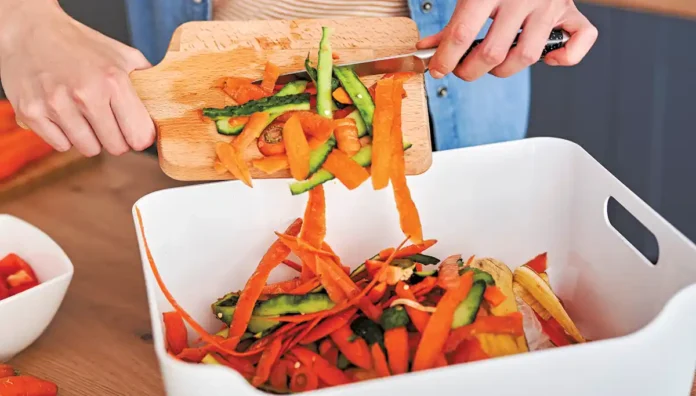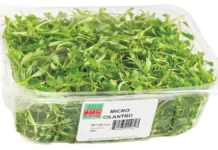
Consumers are returning to restaurants for in-house dining, a much welcomed trend. However, with that shift comes an increase in the waste generated that needs to be managed and disposed of properly by the operator.
As part of my work in the foodservice industry, I often address the topic of waste reduction with operators, but as a consumer, I regularly spot it on my plate. From massive portions to excessive garnishes, it is common practice for restaurants to feed diners’ eyes without considering the environmental, social, and financial impacts of uneaten food that returns to the kitchen. Don’t get me wrong, I enjoy presentation but not excess.
At Imperial Dade, helping our customers reduce waste is part of our mission. Why is this such an important undertaking? Because it impacts the bottom line.
Food is one of the largest types of waste produced by restaurants. It is heavy, wet, and messy. Left untended, it can attract pests and repel customers. More waste means more hauling fees, landfill fees, and increased handling costs. Beyond the environmental, logistical, and financial concerns, food waste also represents a missed opportunity to feed people experiencing food insecurity.
For years, I have followed the research on food waste strategies. Most are logical, but some are creative. I often cite a restaurant case study I read about in New York. Every Sunday, this restaurant makes a special, reduced-cost meal, whipped up with the leftover ingredients that are fresh. For a small flat fee, community members gather to enjoy this “leftover special,” embodying the mantra of many grandmothers: waste not, want not.
To enrich their communities and retool practices that generate food waste, more restaurants are embracing Environmental, Social, Governance (ESG) initiatives. ESG programs offer a framework for sustainable businesses to follow to improve their practices.
To illuminate the key benefits of ESG initiatives, we need to break down the acronym. Within the restaurant industry, environmental concerns revolve around minimizing waste, especially organic matter. Ideally, restaurateurs use the minimum quantity of ingredients necessary to create their menu items and limit the amount of organic matter that exits the building. This is challenging, but with careful purchasing practices, inventory management, and creativity, improvements are achievable.
Socially, initiatives address the impact of restaurant waste on public health and society at large. In this arena, the New York case study shines brightly – as does any restaurant that extends its services to the surrounding community. In many cases, restaurants can donate or repurpose wholesome, and edible food, benefiting community members as well as their bottom lines. There are non-profit organizations in most cities that will assist with this process.
If restaurants can minimize the costs of carting and hauling fees and manage the cost of food purchased, those practices will reflect favorably in their profits. Efforts to monitor and control costs form the foundation of smart governance: the final tenet of ESG.
On occasion, ESG initiatives are about branding and marketing to eco-conscious consumers and other stakeholders. However, these strategies are simply the bedrock of a good business and have multiple benefits.
To save food and money while enhancing company culture, restaurants must involve the entire team in the design and implementation of a food waste reduction plan. This way, employees can contribute ideas and manage the process. If staff understands the big picture, they will care more about the program’s success. It is like a three-legged stool: good for the planet, good for the people, and good for the pocketbook.
Imperial Dade helps restaurants accomplish these goals by assisting them with developing waste audits. These audits include measuring everything that ends up in the trash, recycling, or composting bin and recording the food waste specifically.
Simple changes including making the breadbasket and side dishes optional, reducing the size of ramekins for dipping sauces, and going easy on the garnishes can reduce the costs and environmental impact of waste.
In addition to portion control, embracing “aesthetically challenged” produce that is not picture perfect is another way to reduce waste. If the ingredients will be chopped, sliced, or pureed does it really matter if they are odd looking if they are wholesome and taste good?
Beyond minimizing what goes into the trash, a good waste management program also includes the right equipment and supplies such as using high-quality can liners to bag and discard waste. First, restaurants should “right size” their liners which means selecting the correct type and size liner for each receptacle and its contents. Using a liner that is too large or thick is wasteful and using one that is too small or thin can result in a big mess.
The ideal can liners restaurants should use for organic waste are made from linear, low-density poly, which has stretchy, puncture-resistant properties that prevent tearing and hold weight. The bag should also have a star seal on the bottom, which effectively contains heavy, wet waste while preventing leaks. Using the best size and shape receptacles for each purpose is also important. Keep weight limits in mind to ensure workplace safety. A huge trash can may seem like a great idea in the BOH, but if your staff cannot safely lift the bag, it is a problem.
To build a sustainable food waste strategy, restaurants must commit to an upfront investment of time, energy, and finances. But it will pay off! A study by the National Restaurant Association states that waste reduction programs have a 7:1 benefit-cost ratio, meaning for every $1 invested, there is a $6 ROI. This is an opportunity for restaurants to design thoughtful, inventive meals that delight their diners, strengthen their team cultures, and nourish community members beyond their walls.























